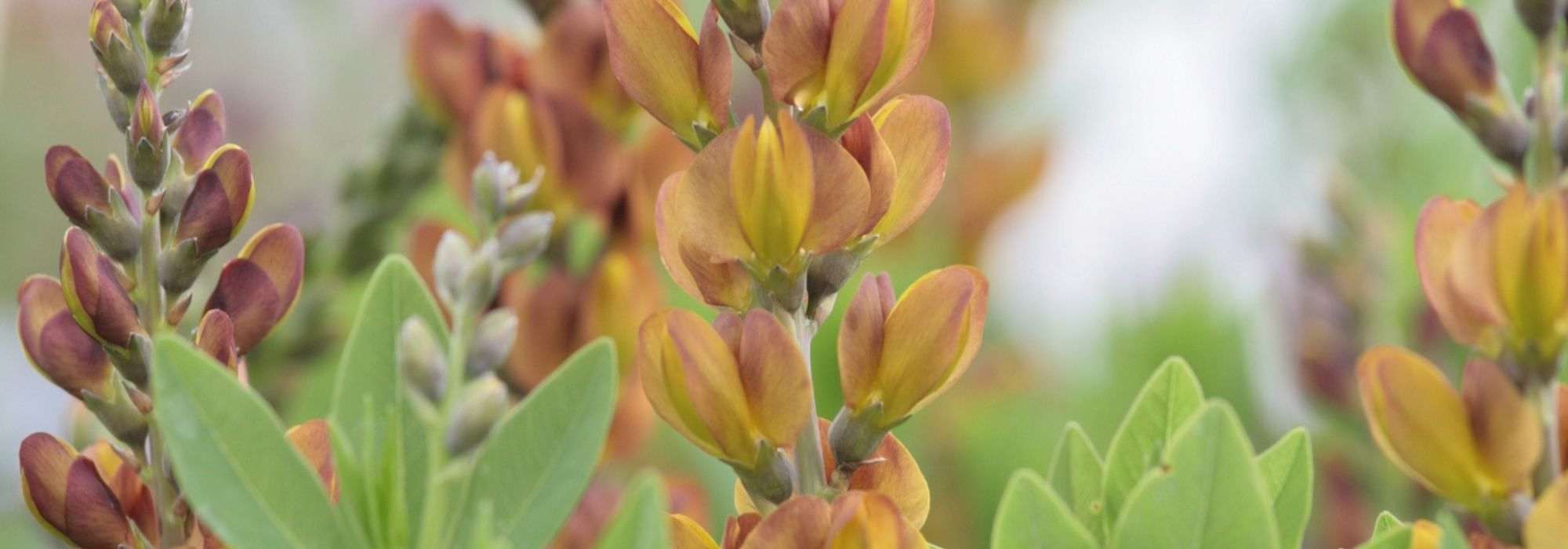
Baptisia: the most beautiful varieties
to colour the garden
Contents
Well grown, Baptisia look impressive. This perennial, with its tall flower spikes, is very interesting for adding volume to borders and has many qualities. Firstly, the indigo lupin is easy to grow and has good cold resistance. Next, its flowers are papilionaceous and are melliferous, providing food for many pollinating insects. Finally, the root system of the False Indigo (or Podalyre) has the ability to fix nitrogen from the atmosphere, which allows it to thrive in poor soils. The only drawback of this Fabaceae is its slow growth. However, once established, it will live for a long time! Well known for its deep blue flower spikes, the Baptisia australis is now available in new original colours. Discover in this guide our 7 favourite varieties of Baptisia, several of which belong to the series named Decadence.
Baptisia australis ‘Sparkling Sapphires’: deep blue
The Baptisia australis ‘Sparkling Sapphires’ is one of the smallest indigo Lupins, perfect for tight spaces. In fact, it does not exceed 80 cm in height, compared to the classic species and varieties, such as the type species Baptisia australis which reaches 1.50 m in height. This ‘Sparkling Sapphires’ variety is vigorous and strongly ramified, forming a dense tuft of blue-green leaves. As with all Baptisias, its foliage reminiscent of alfalfa disappears in autumn. However, its greatest asset is its abundant flowering of a beautiful vivid violet-blue. This Baptisia, from the recent Decadence series created in the United States, produces floral spikes of 25 cm in June for about 3 weeks. In full sun, the intense indigo colour of its papilionaceous flowers pairs beautifully with the Baptisia australis ‘Alba’. For companions, give them blue or white flowering plants: Sages, Blue Mountain Cornflower or white, Iris, White Epilobium, and Gentian.
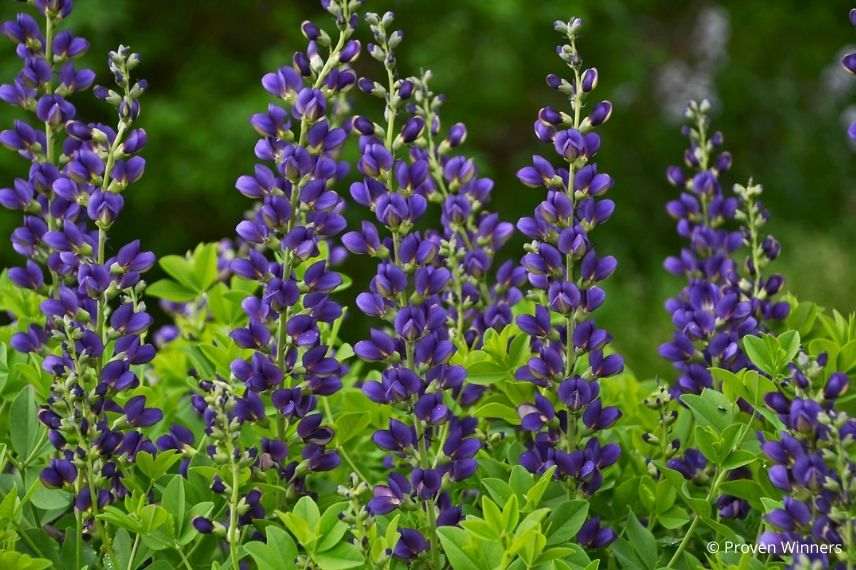
Baptisia australis ‘Sparkling Sapphires’
Baptisia australis ‘Pink Lemonade’: warm and multicoloured
Just like Baptisia australis ‘Sparkling Sapphires’, the Baptisia australis ‘Pink Lemonade’ is also a variety from the Decadence collection. Born in 2015, this American bushy hybrid reaches 1.10 m in all directions. It is renowned for the excellent hold of its flowers. Indeed, while some Baptisias already have faded flowers, the cultivar ‘Pink Lemonade’ is still in bloom. It is also distinguished by its original colours: the flowers open in pale yellow, then bloom bicolour in yellow and pink, finally turning violet at ripeness. Flowering begins in May or June. It is at this time that the flower spikes, about forty centimetres long with dark stems, appear. Lasting for 3 weeks, the flowers attract numerous insects. In sunny situations, this vibrant perennial pairs perfectly with hollyhocks such as Alcea rosea ‘Chater’s Double Rose’ or ‘Fiesta Time’, herbaceous peonies (‘Sarah Bernhardt’, ‘Karl Rosenfield’) or even with the large and intense hardy geranium ‘Rosemoor’.
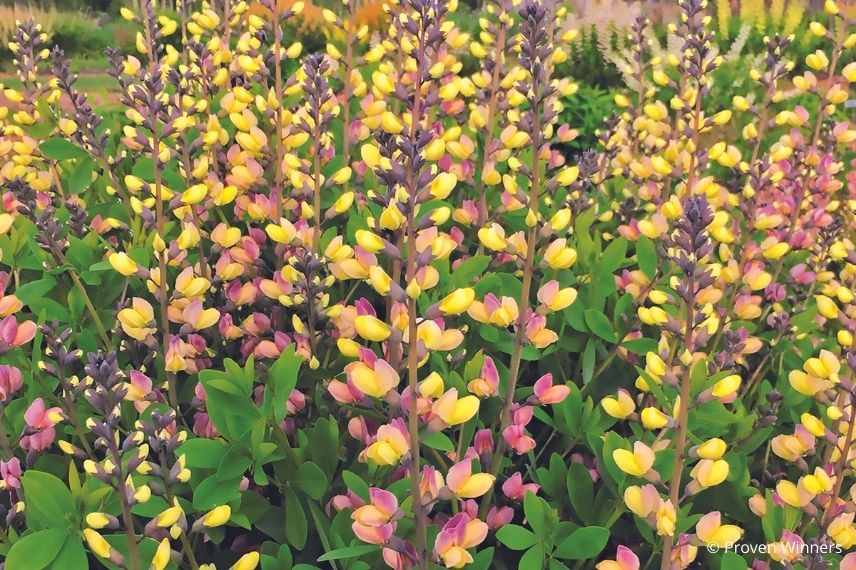
Baptisia australis ‘Pink Lemonade’
Discover other Baptisia
View all →Available in 0 sizes
Available in 1 sizes
Available in 1 sizes
Available in 1 sizes
Available in 1 sizes
Available in 2 sizes
Available in 1 sizes
Available in 2 sizes
Available in 1 sizes
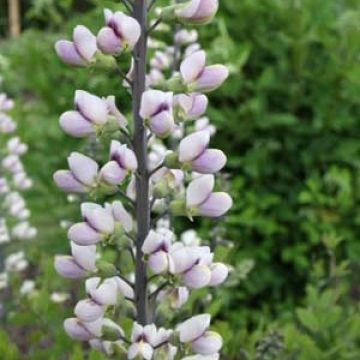
Available in 1 sizes
Baptisia australis ‘Dutch Chocolate’: dark velvety
Still in the Decadence series, but with a darker twist, here is Baptisia australis ‘Dutch Chocolate’. This one stands out for its astonishing colour. In June, it reveals its colourful pea-like flowers in a subtle blend of brown-purple, slightly purple with a hint of yellow. Its large spikes of 45 cm rise above a tuft of pale green leaves with bluish highlights that further enhance the satin-like flowering. This compact, floriferous indigo lupin, reaching about 1 m in height, finds its place at the back of a modern border alongside striking ornamental onions (Allium amethystinum ‘Forelock’, Allium atropurpureum or Allium ‘Silver Spring’), variegated grasses, the Brazilian giant rhubarb, and Eremurus.
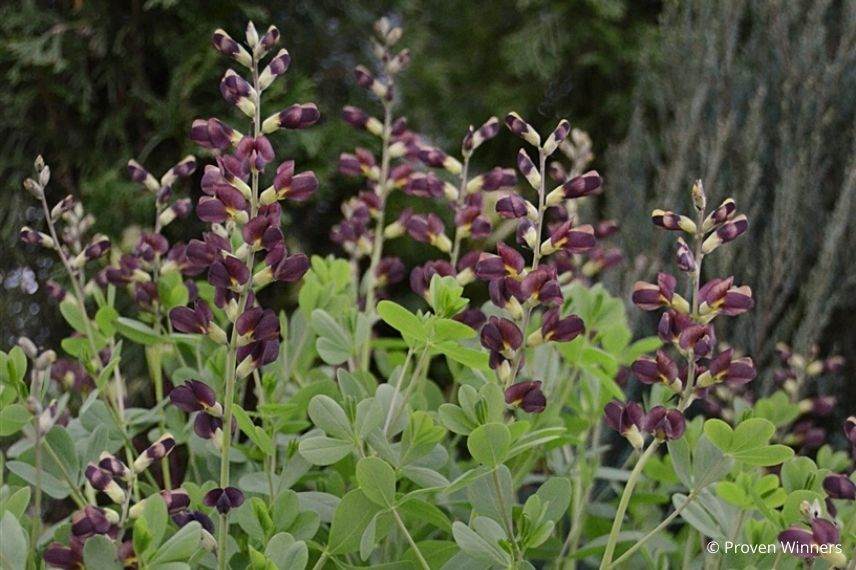
Baptisia australis ‘Dutch Chocolate’
Baptisia australis ‘Pink Truffles’: soft pastel
In contrast to Baptisia australis ‘Sparkling Sapphires, the Baptisia australis ‘Pink Truffles’ displays very soft shades of pink at the end of spring. Its flower spikes of 25 cm, initially pink, gradually change colour to lavender. Its medium green and bluish deciduous foliage forms a silhouette of 85 cm in all directions. Very hardy like the other cultivars in the Decadence series to which it belongs, this hybrid withstands temperatures below -15°C! Plant Baptisia ‘Pink Truffles’ in a garden with a poetic atmosphere, featuring Campanulas in the foreground, Astrantias, and Columbines such as Aquilegia vulgaris stellata ‘Rose Barlow’ and ‘White Barlow’, along with tall Delphiniums like the variety ‘Pacific Astolat’, as well as Clematis climbing their support in the background.
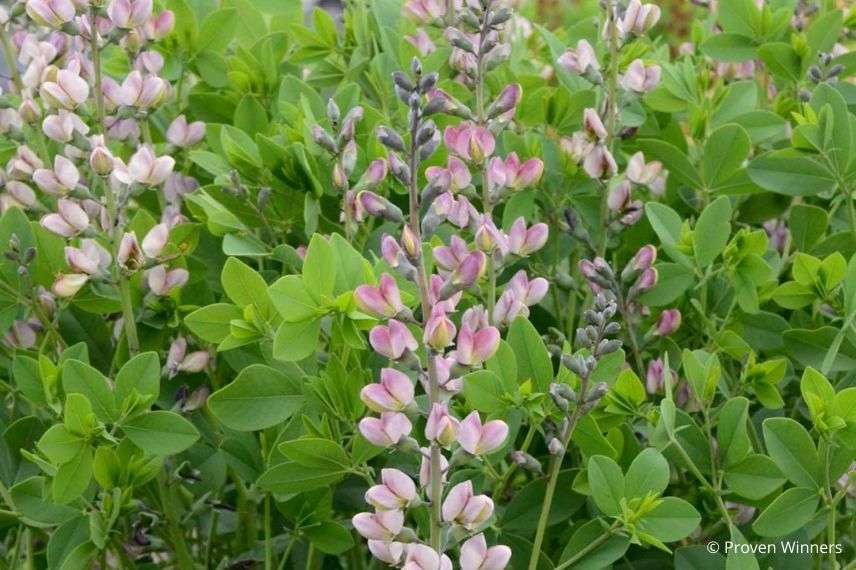
Baptisia australis ‘Pink Truffles’
Baptisia australis ‘Vanilla Cream’: a delicious colour
The recent Baptisia australis ‘Vanilla Cream’ truly lives up to its name. Its creamy white flowers remind us of vanilla cream! Also part of the Decadence series, this indigo lupin has small floral spikes measuring 20 cm that bloom in June. It also has the unique feature of developing young bronze-coloured leaves at bud burst, which then turn bluish-green. Very drought-resistant in summer, this modestly sized Baptisia can thrive in poor soils. With its very light yellow, it fits well in a dry garden alongside dry soil grasses, Achilleas, Sedums like ‘Sunsparkler Lime Zinger’, Lavenders, and why not alongside spiny restharrow Ononis spinosa.
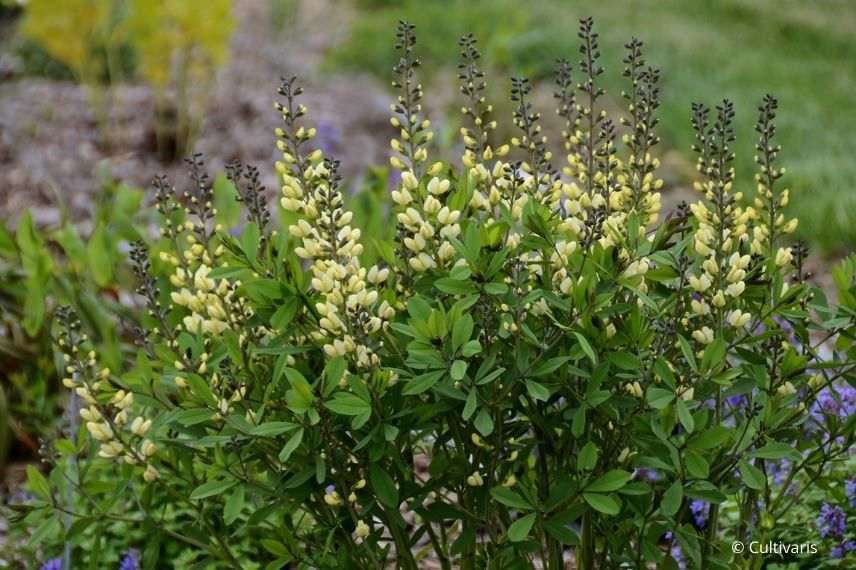
Baptisia australis ‘Vanilla Cream’
Baptisia australis bracteata ‘Starlite Prairieblues’: freshness and simplicity
Bicolour, the Baptisia australis bracteata ‘Starlite Prairieblues’ delights us with a delicate and opulent very light flowering, with lavender buds followed by blue and white flowers. This is a hybrid of two wild species, Baptisia australis and Baptisia bracteata, created by the Chicago botanical garden. This cultivar is generally earlier than others, with flowering in May. This perennial, deciduous and bushy plant then dresses itself in very long spikes of flowers. Reaching up to 60 cm, their weight causes the stems to bend, giving this Baptisia a more sprawling posture. Highlight this Baptisia by pairing it with airy and light perennials such as Buenos Aires Verbena, Gauras, Dieramas, Goat’s Rue, and Pennisetums.
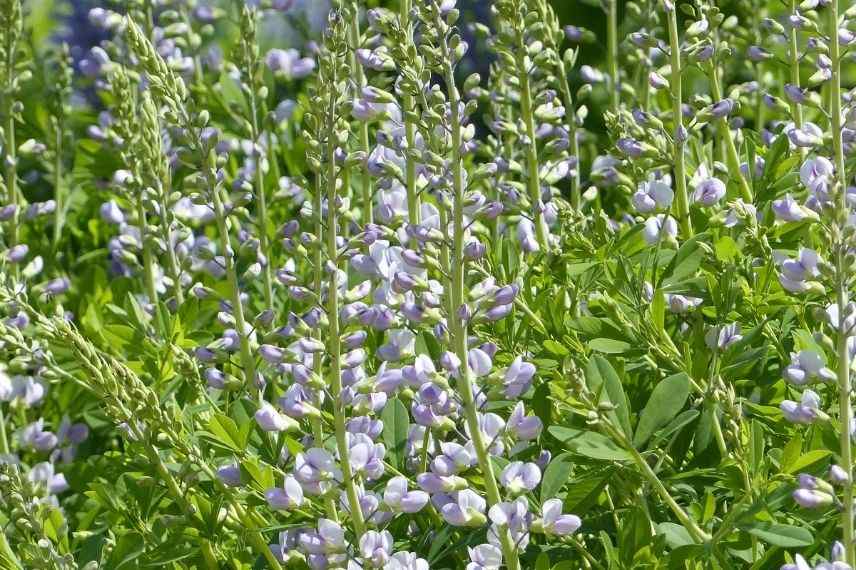
Baptisia australis bracteata ‘Starlite Prairieblues’
Baptisia pendula ‘Alba’: radiant elegance
The Baptisia pendula ‘Alba’, also known as White False Indigo, can reach 1 m in height with a spread of 60 cm. It is valued for its hardiness and its ability to thrive in less than ideal soil conditions. This Baptisia flowers later than the previously mentioned varieties. Long dark grey stems rise in June or July. The small off-white flowers are inserted and form very large floral spikes of 45 to 50 cm. This perennial, which is also very hardy, pairs easily with white Agapanthus, Daylilies such as Hemerocallis ‘Gentle Shepherd’, Daisies, and white Lupins in an elegant white garden.
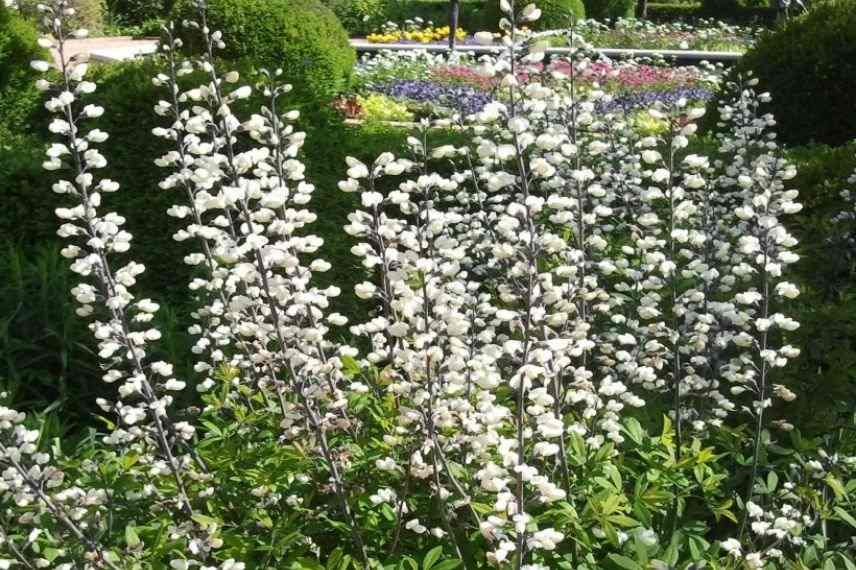
Baptisia pendula ‘Alba’
For further reading
Discover our article for successfully pairing Baptisia: 7 ideas for successful combinations.
With our article Baptisia or Indigo Lupin: sow, plant and grow, you will learn everything about the False Indigo.
Find all our planting tips for a graphic and modern garden.
Check out our plants for a blue and white garden, dry garden, and romantic garden on our site.
Consult our article to find ideas for white garden beds.
- Subscribe!
- Contents
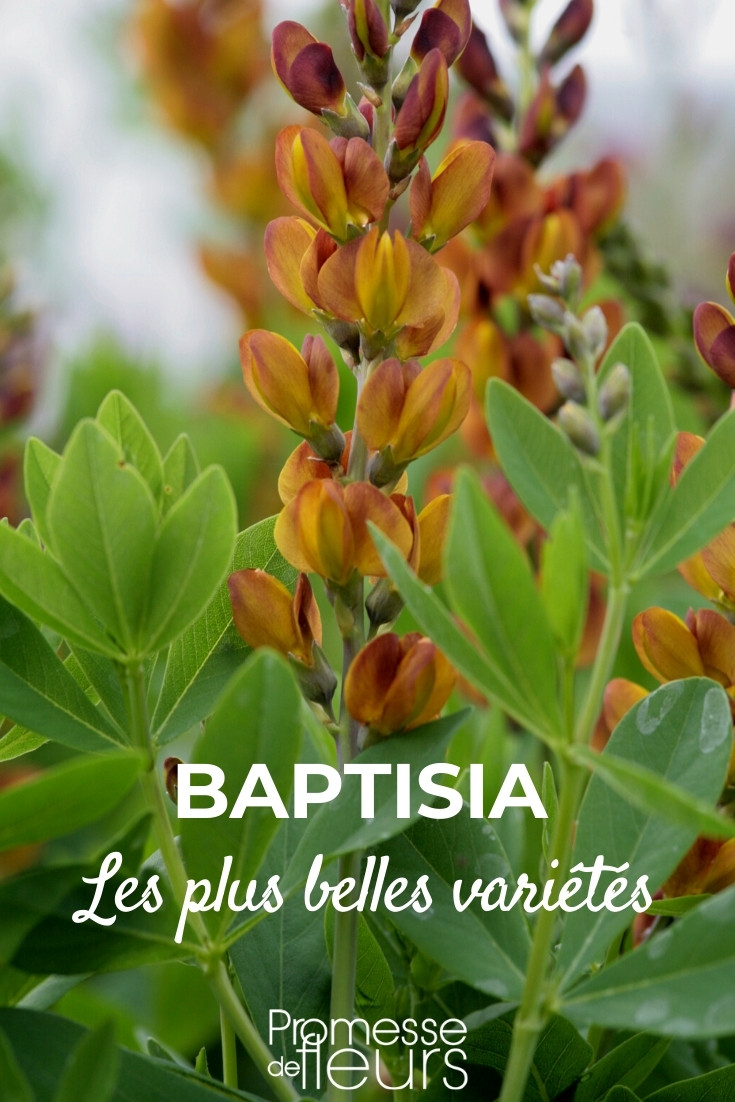































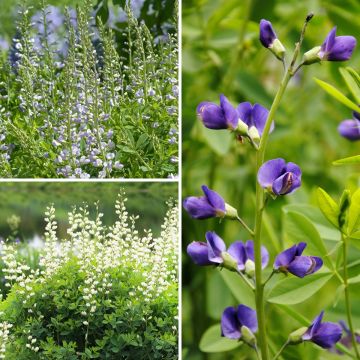
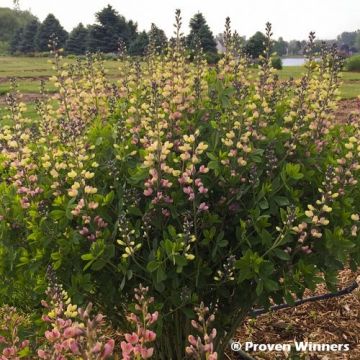
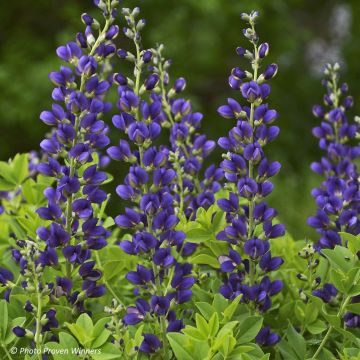
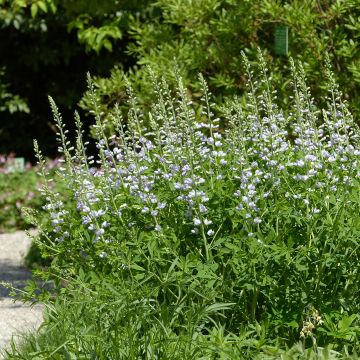
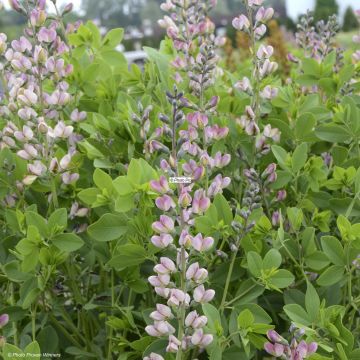
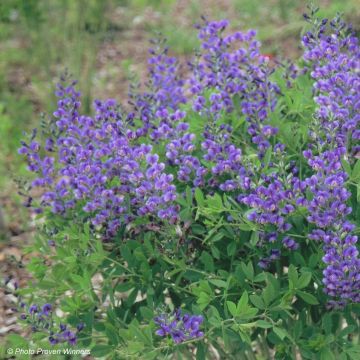
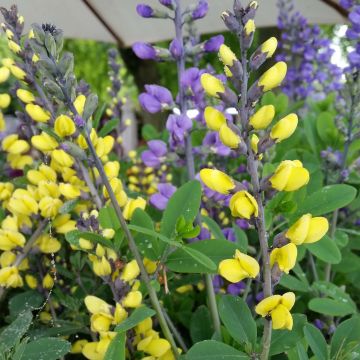
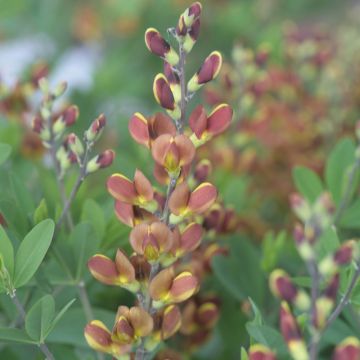
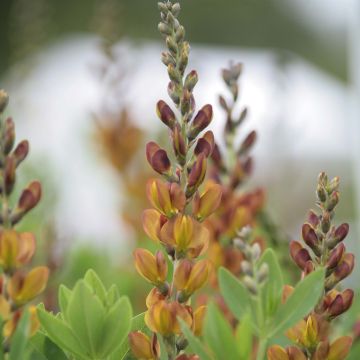
Comments